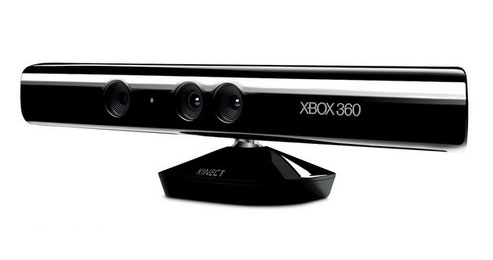You can hack it.
 Saturday, November 27, 2010 at 1:43AM
Saturday, November 27, 2010 at 1:43AM 
Microsoft has a hit on its hands. From Israeli military hardware to Microsoft game controller to … to whatever you can get away with. The XBox 360 Kinect is a hit. When Adafruit announced a cash reward to the first person to write an open source driver for the Kinect, the Microsoft legal department kicked in, issuing a statement to CNet:
Microsoft does not condone the modification of its products. With Kinect, Microsoft built in numerous hardware and software safeguards designed to reduce the chances of product tampering. Microsoft will continue to make advances in these types of safeguards and work closely with law enforcement and product safety groups to keep Kinect tamper-resistant.
But cooler heads prevailed, and only days later the company took an about face. In an interview with Ira Flatow on NPR’s Science Friday, Director of Incubation, Alex Kipman, XBox, Microsoft, said the Kinect was left open “by design.” When asked if anyone would get in trouble with Microsoft for developing for Kinect outside of the XBox platform he replied with an emphatic:
Nope.
Absolutely not.
For whatever the spin, Kipman went on to express his and Microsoft’s support for the enthusiastic embrace the Kinect has received from the open-source development community.
The sheer velocity that community has sprung up around hacking the Kinect far surpass even that which grew around the Wii, which was impressive in its own right. In less than 10 days Hector Martin claimed the prize from Adafruit, writing an open-source driver for the Kinect. In that same time Microsoft sold 1 million units!
Once the driver was in place, it was quickly ported to other platforms. Linux, Windows and Mac OS X can all run the device – Whether it is a full body controller for Mario, or an augmented reality overlay for your lightsaber, nearly every day someone comes up with something new. I’ve collected a few of my favorites here:
On the artistic side, Robert Hodgin, splits himself …
… and Atsushi Tadokoro frames himself …
… while Henry Chu boxes himself …
Some of the more technical demo hacks are also well worth checking out, Dustin O’Connor hacks multi-touch with virtual objects …
The Fluid Interfaces Group at MIT Media Lab wrote a browser plug-in that allows any webpage to receive input via the Kinect …
While the ever ambitious Oliver Kreylos is just getting started — combining 3D glasses, a Kinect camera and a Wii, he has built a 3D virtual world that he uses to contruct molecules, atom by atom …
What I’m axiously awaiting is the hack that will run several Kinect Cameras in unison. The way the device works, it projects a grid of infrared dots into its field of view, one camera reads the grid to determine depth, and another camera reads color. With several Kinect devices one could map a larger area, including the “back face” so that objects and environments could be understood in-the-round. This device has potential beyond any single one of our imaginations. It’s a powerful new tool we have in the inventory of affordable augmented reality, virtual reality, human-computer interface devices. This is going to be very very big for Microsoft. Far beyond a mere game controller, this is a game changer.
For those of us following Project Natal, this launch has been the long wait — Going from research project to shipped product, the device became Kinect, and it’s living up to its anticipation. Below, a pre-release demo played by Felicia Day shows the technology in its native habitat:
 hack,
hack,  hacks,
hacks,  kinect,
kinect,  microsoft in
microsoft in  Technology
Technology 